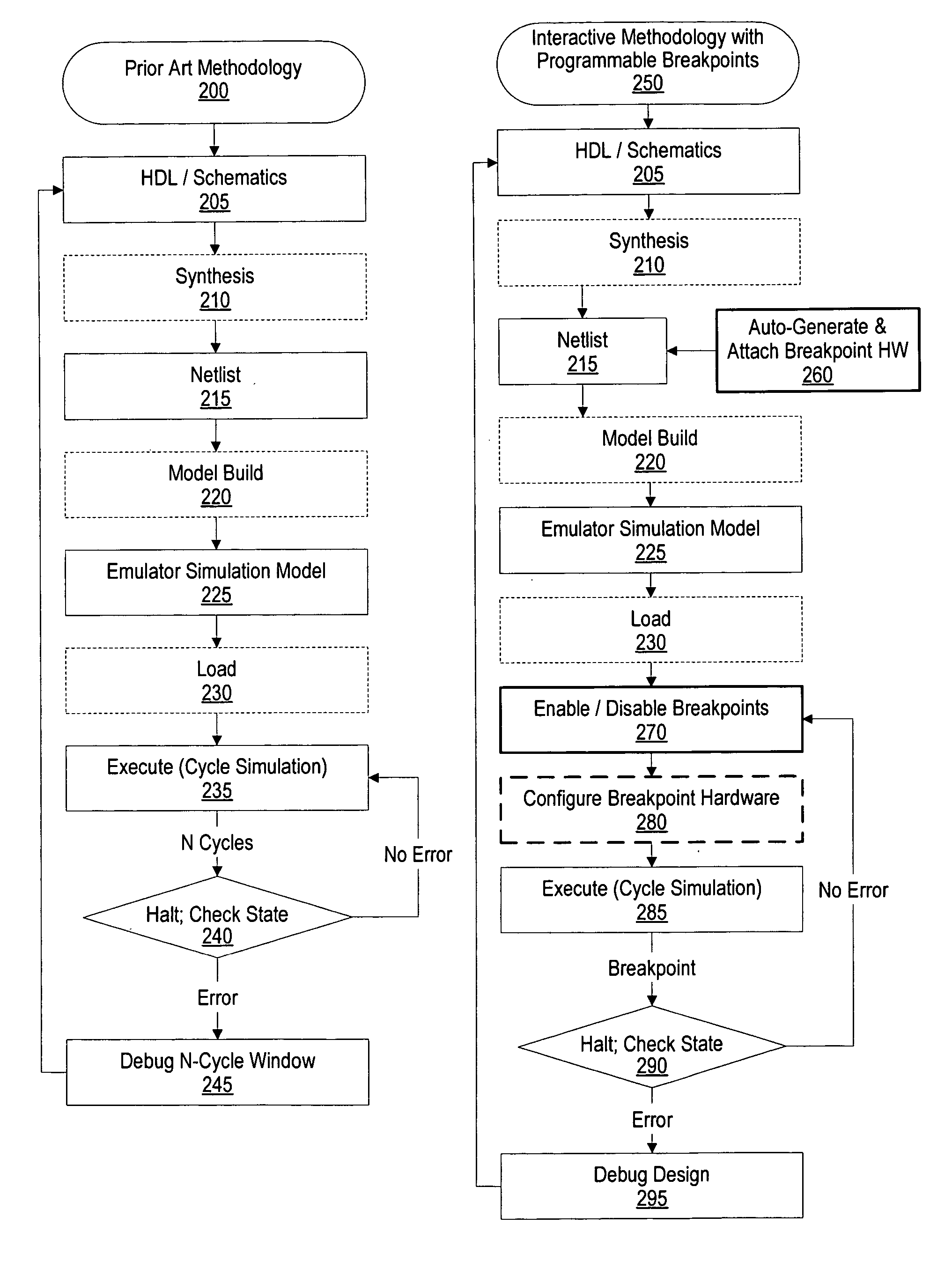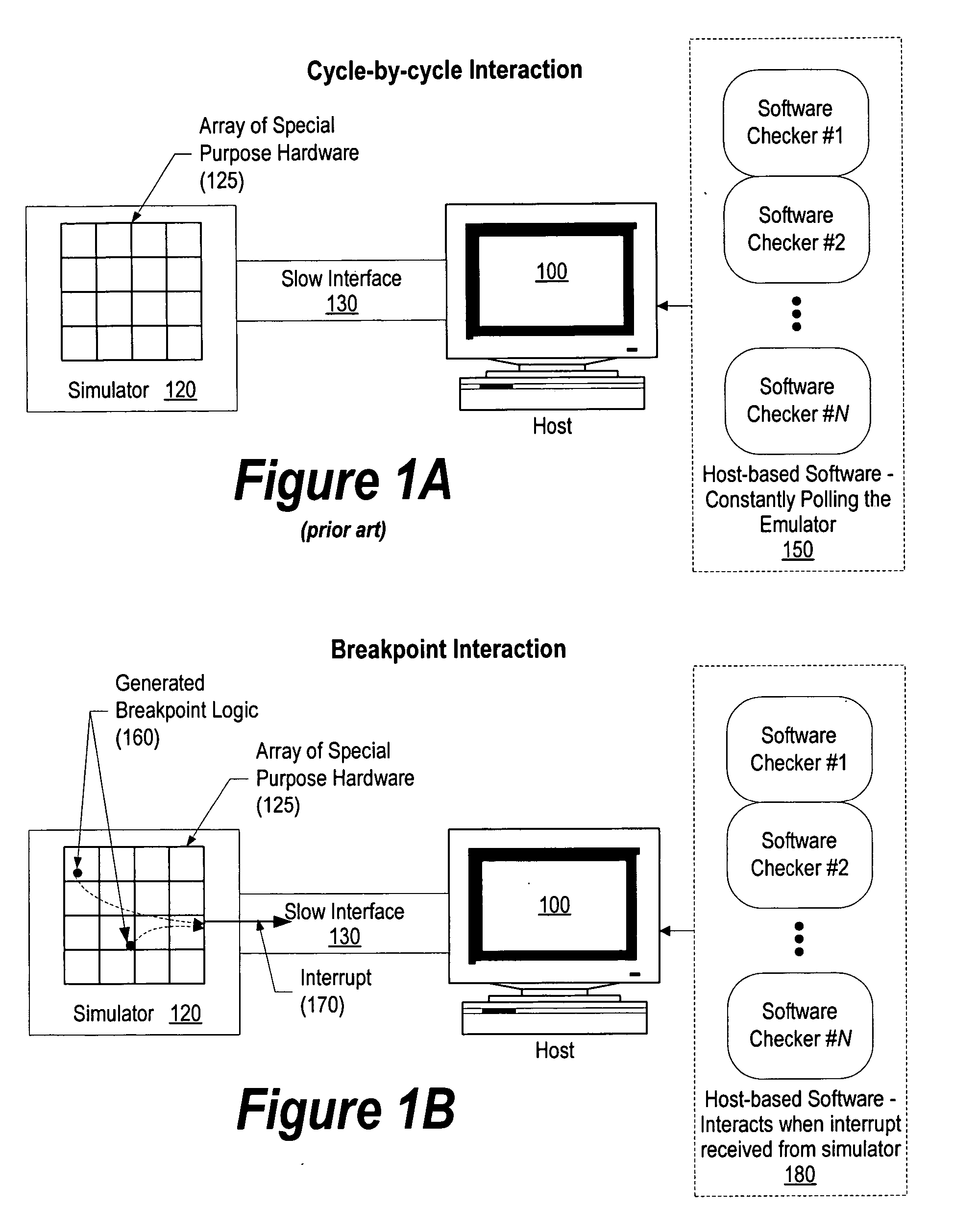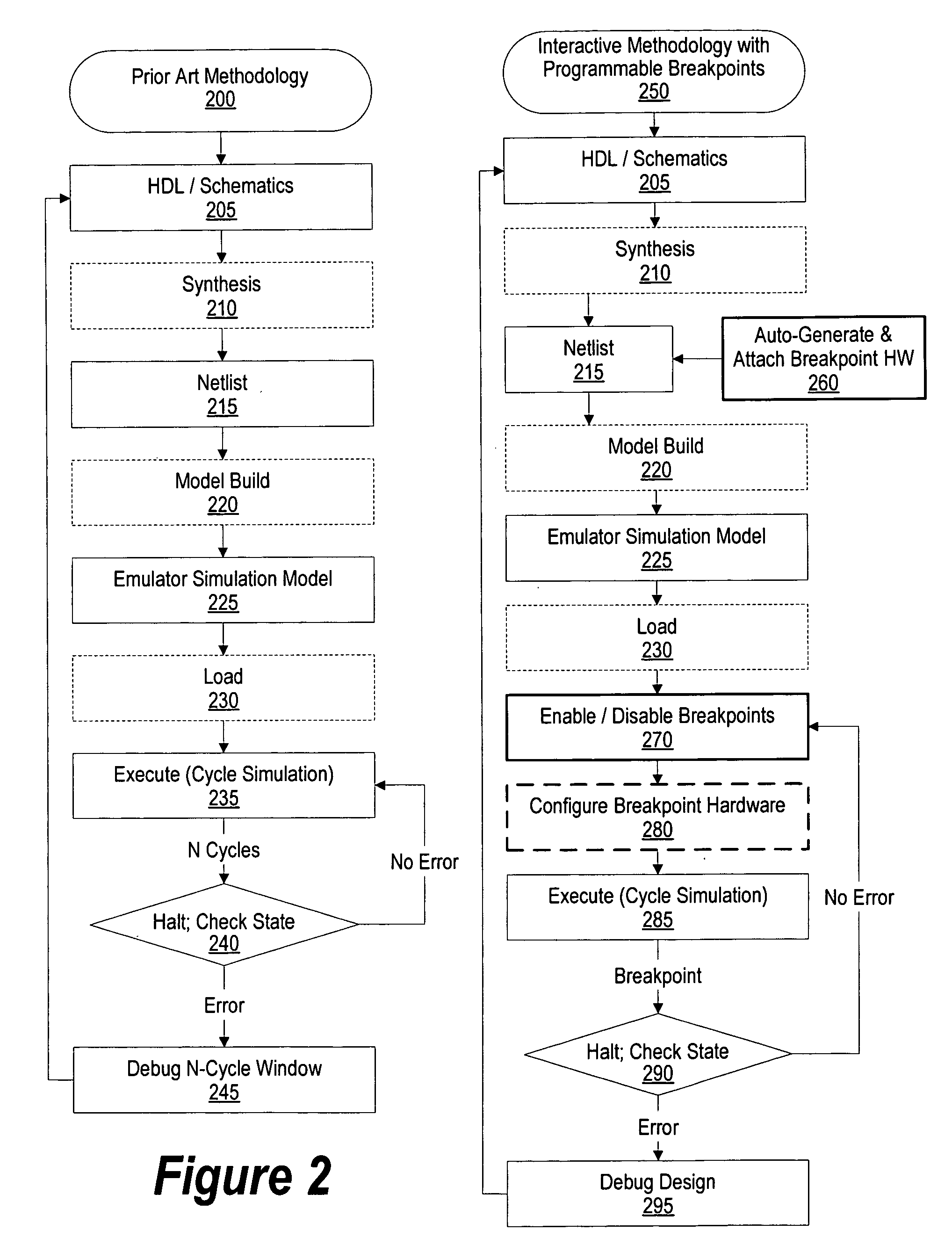System and method of automating the addition of programmable breakpoint hardware to design models
a technology of hardware and design models, applied in the field of system and method for automatically adding hardware breakpoint logic to hardware design models, can solve the problems of increasing the time and effort required for product development, longer the time it takes for the product to reach the marketplace, and more time consuming and costly redesigns, etc., to achieve the effect of minimizing the effort and hdl expertise, maximizing simulator performance, and maximizing the power and flexibility of software-based checkers
- Summary
- Abstract
- Description
- Claims
- Application Information
AI Technical Summary
Benefits of technology
Problems solved by technology
Method used
Image
Examples
Embodiment Construction
[0036] The following is intended to provide a detailed description of an example of the invention and should not be taken to be limiting of the invention itself. Rather, any number of variations may fall within the scope of the invention which is defined in the claims following the description.
[0037]FIG. 1A is a prior art depiction of a simulation using cycle-by-cycle interaction. Host computer 100 is used to load a simulation model into hardware simulator 120 via a relatively slow interface (130) coupling simulator 120 to host computer 100. Using a hardware simulator, such as simulator 120, provides increased performance over using a software based simulator. The hardware being tested is mapped into gates and arrays 125 of custom Application-Specific Integrated Circuits (ASICs) or Field Programmable Gate Arrays (FPGAs) for execution on the hardware simulator. While execution on the hardware simulator is much faster than when using a software-based emulator, the traditional simulat...
PUM
 Login to View More
Login to View More Abstract
Description
Claims
Application Information
 Login to View More
Login to View More - R&D
- Intellectual Property
- Life Sciences
- Materials
- Tech Scout
- Unparalleled Data Quality
- Higher Quality Content
- 60% Fewer Hallucinations
Browse by: Latest US Patents, China's latest patents, Technical Efficacy Thesaurus, Application Domain, Technology Topic, Popular Technical Reports.
© 2025 PatSnap. All rights reserved.Legal|Privacy policy|Modern Slavery Act Transparency Statement|Sitemap|About US| Contact US: help@patsnap.com



